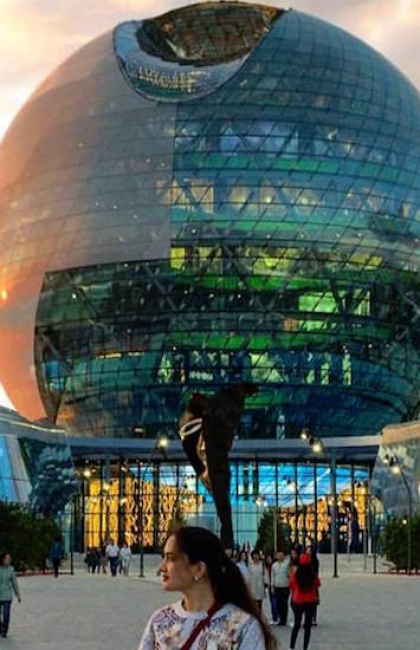Palace of Peace and Reconciliation
In 2006, Astana experienced a construction boom, and the newly built Palace of Peace and Reconciliation immediately captured the attention of its residents. It became affectionately known as «the pyramid» due to its distinctive shape.
The palace was the brainchild of Nursultan Nazarbayev, the First President of Kazakhstan, who first proposed the idea in 2003 during the first Congress of Leaders of World and Traditional Religions. To reflect the importance of the event, a grand structure was needed, and the Palace of Peace and Reconciliation was inaugurated in 2006, featuring a performance by the renowned Montserrat Caballe in its opera hall.
The palace was designed by the British architect Sir Norman Foster, who gave the world the Hearst Tower in New York, the restored Reichstag in Berlin, Apple Park in Cupertino, Khan Shatyr in Astana, and many more famous buildings. The pyramid has four faces, each representing a cardinal direction. Its centerpiece is a spacious square with sides measuring 62 meters, equal to the height of the pyramid. The Palace of Peace and Reconciliation went on to host the second Congress of Leaders of World and Traditional Religions, solidifying its reputation as a symbol of global unity and harmony.

Religion and Culture
The Palace of Peace and Reconciliation is not only a center for interfaith dialogue and unification but has also become a prominent cultural object. Its state-of-the-art opera hall, equipped with 1302 seats and a complex stage consisting of four parts, provides a perfect venue for a wide range of performances. The hall's versatility makes it an ideal setting for a variety of events, and its design ensures that the various stages do not depend on each other.
Besides the opera hall, the Palace also features several other halls. The largest of them is called the Cheops Atrium, which includes four galleries. One of these galleries showcases the master plan for the development of the capital.
In addition to the various halls, the Palace houses the Kulanshy Center for Contemporary Art and Shejire Gallery, where Kazakh and foreign artists organize exhibitions and creative evenings. The Palace also provides conference rooms and a press center for different events.
The Cradle Hall, located on the upper floor of the Palace, boasts a unique glass dome adorned with 130 dove designs, symbolizing the ethnic groups living in Kazakhstan. The dome's idea came from the British artist Brian Clarke, who worked alongside Norman Foster. This hall served as the venue for the second first Congress of Leaders of World and Traditional Religions, and visitors can reach it by a transparent elevator that moves diagonally or by climbing the stairs, where they can see the hanging gardens, featuring various plant species.
The Palace's surroundings have been landscaped, making it a popular spot for residents and visitors to stroll around, particularly during the warm season.
How to get there?
Address: Astana, 57 Tauelsyzdyk Ave.
The palace can be reached by buses No. 3, 4, 4A, 19, 21, 29, 29A, 32, 40, 43, 50, 802, and 806.


 (1)_420x650_4ab.jpg)
_420x650_4ab.jpg)
_420x650_4ab.jpg)